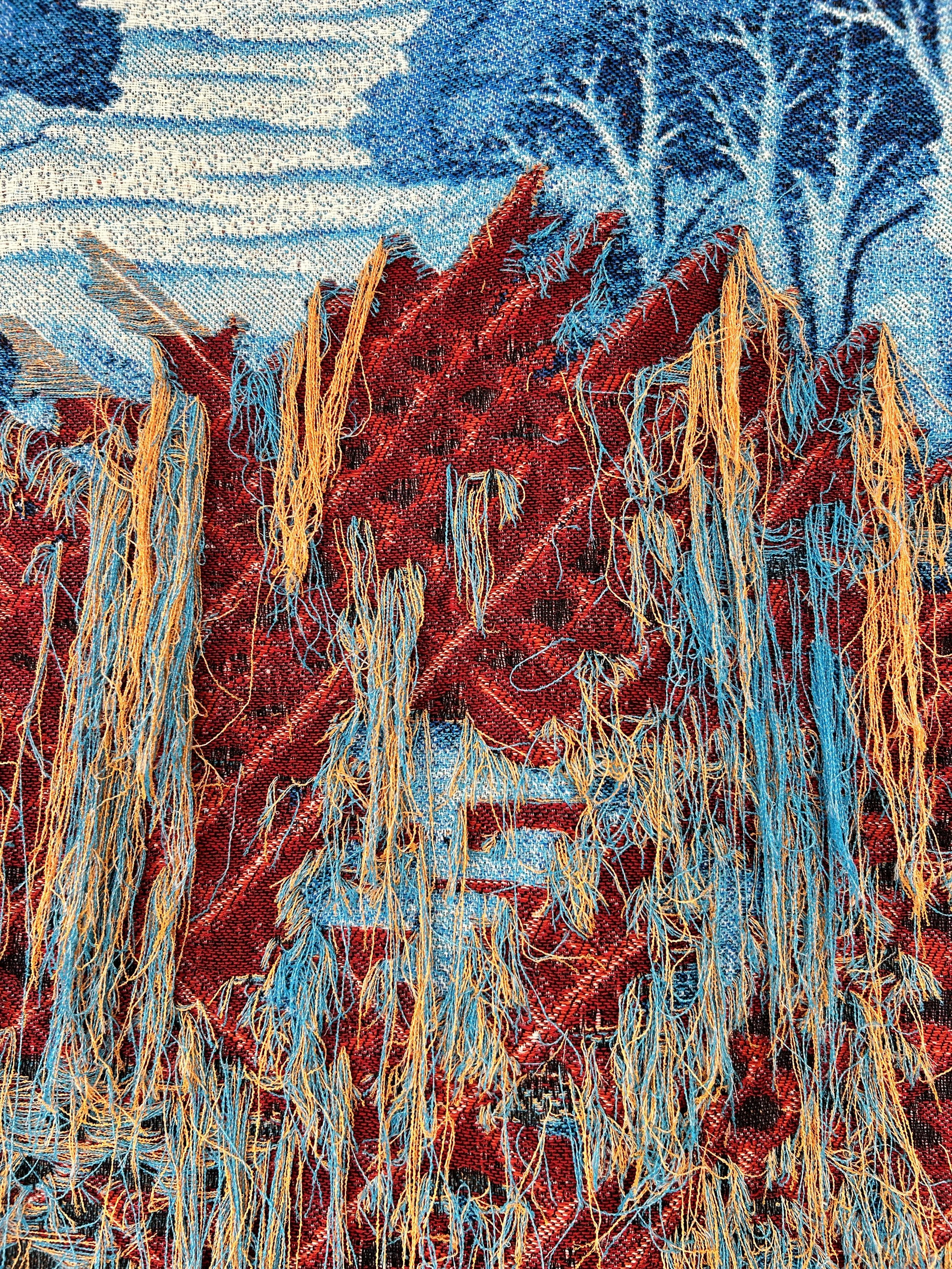
Avkom
“See Me”, Jacquard weave. Wool.
Group Exhibition with participating artists: Anne Tveit Knutsen, Arne Rygg, Astrid McGarrighan, Birgit Eide, Bjarte Bjørkum, Brynhild Grødeland Winther, Eleanor Clare og Dillan Marsh, Gunhild Sannes, Harald Tørresen, Judith Elisabeth De Haan, Karina Herteig, Kristina Austi, Kwestan Jamal Bawan, Laura Gaiger, Lillian Presthus, Manuel Portioli, Rita Marhaug, Sara-Marie McGarrighan, Siavash Kheirkhah, Tone Andersen, Tove Tømmerberg, Trine Hovden, Vibeke Rød Kjøde
The most fundamental aspect of the human experience of time is the generational shift. It is an existential aspect of being alive and a reminder of our transience. Simultaneously, this process is part of a continuum we, as humans, partake in—extending beyond our own lived lives. What is inherited from previous generations can shape what unfolds in future generations. Studies in epigenetics have shown that experiences and traumas can cause measurable biological changes passed on to the next generation, underscoring how past events can influence future humans on a genetic level (Yehuda & Bierer, 2009). The actions of shifting generations collectively shape the overall development of society, impacting individual lives, even for those without children.
Parenthood is a fundamental and transformative experience shared across cultures. Yet, this universal endeavour reflects the time's complex social, cultural, and political currents. Research from Bronfenbrenner’s ecological systems theory shows how children's development is shaped by interactions at both micro levels, such as family and local communities, and macro levels, such as the political and economic structure of society (Bronfenbrenner, 1979). Today, the youngest generation expresses growing concerns about the future. According to UNICEF’s The State of the World’s Children report (2021), young people worldwide report increasing stress related to climate change, economic instability, and global conflicts. These challenges form a backdrop that must be navigated by those currently in their formative years—and, not least, by their parents. What is it like to raise children in a time where such challenges shape the outlook on the future?
The Kunstgarasjen members’ exhibition, AVKOM, centres on a theme that combines diverse artistic reflections on the dynamics between generations, encompassing personal narratives and broader societal commentary. The artworks in the exhibition depict children’s lives and circumstances through a parent's eyes and how one relates to having been a child in a family with its own history. The exhibition reveals traces of how the environment shapes experiences and circumstances within a particular upbringing and how the prevailing zeitgeist influences perceptions of children and parenthood. The artworks explore aspects of parenthood concerning symbolism, conventions, and role expectations intertwined with the biological and caregiving aspects and the close connections inherent in familial bonds.
AVKOM thus presents an artistic approach to the discourse on how society shapes its most impressionable individuals and what this means for how we live. The exhibition provides an opportunity to experience works by 24 artists, offering insights into the experience of parenthood and family relationships in our time and, in doing so, examines humanity’s relationship with the past, present, and future.
Written By Jane Sverdrupsen, translation ChatGPT.

















































